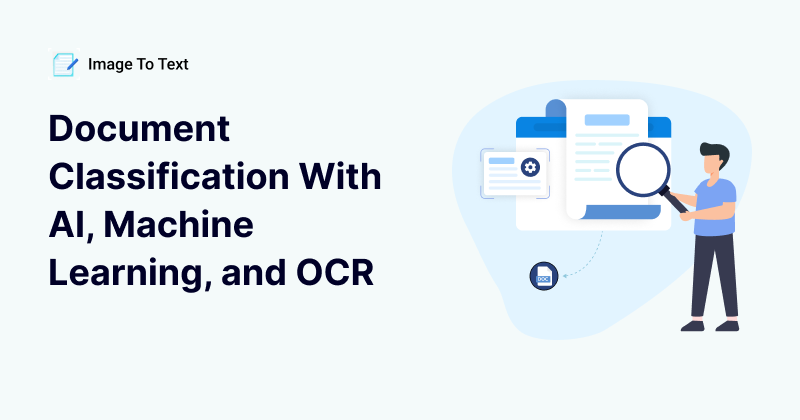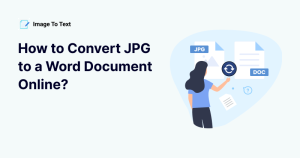Document Classification With AI, Machine Learning, and OCR
The organization of data is a process acknowledged as crucial by many. And this is nothing new or modern. Even in the olden times, books and scripts were stored in an organized manner in certain libraries. Even now, if you go into a library, you can see different sections where different genres of books are kept.
Now imagine the same library with all the books placed in random order. It would be a nightmare. People would spend whole days just looking for the book they wanted. This simple example shows the importance of data classification.
However, the domain of this process is not confined just to libraries or bookstores. You need to perform this process in various fields, whether private or professional. This article goes into detail about how one should go about this process of classification in modern times.
Document Classification Nowadays
When we think of organizing documents, large shelves or storerooms might come to mind. But this is a story of the past. Now, in the age of computers, document classification is much simpler. We are able to store information in machines rather than in drawers, racks and safes.
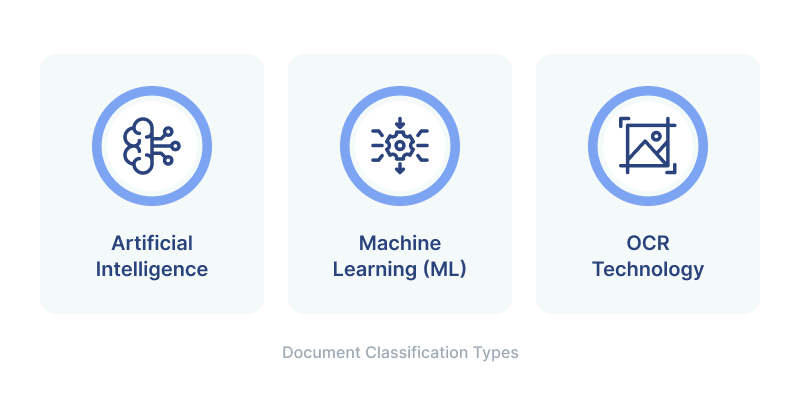
While we have to acknowledge that computers revolutionized this process of document classification, a new force has emerged that takes this a step further. A very common term these days is ‘AI’ and its wonders.
Document categorization has also been affected by the rise of AI. The introduction of automation in this process has made it tenfold easier. But what is this AI, and how has it affected this function so much? Let’s briefly explain that here.
What is AI?
AI is a leading-edge technology that can replicate human intelligence. It comes in various forms. For example, NLP, or Natural Language Processing, is a branch of AI that has provided us with revolutionary tools such as ChatGPT.
ChatGPT replicates human intelligence in a way that allows it to converse with us in any way we like. It can understand and respond to our queries even if they are not written in a professional manner with specific keywords.
Similarly, image generators are another popular outcome of AI. These tools create an image based on a text command. So, if you write, ‘Create an image of an apple that is blue,’ it will generate exactly that.
AI in Document Classification
Now, the real question is that how does this technology inclines with document categorization. As we hinted previously, AI is able to understand or analyze data. The word ‘understand’ is important here. It is different from a machine recognizing that a sentence written in MS Word is a piece of text. It means knowing what the sentence is talking about.
Based on this ability, AI is able to automatically analyze the content of different documents and classify them according to given parameters. In contrast to such automated classification, the manual method requires users to go through all the files themselves. This method is still faster than sorting physical papers, but it takes way more time than automatic sorting.
Other than that, you can also give AI personalized demands. For instance, you can tell the software or the tool to sort files based on whether they have images or not. In short, the possibilities are vast in such a method.
Benefits of Document Classification
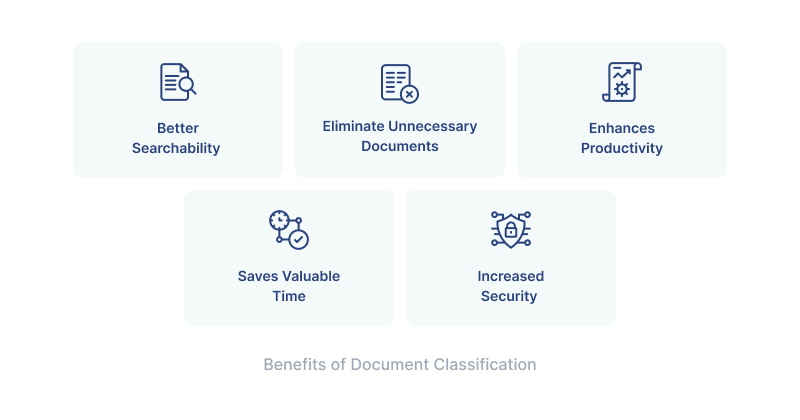
Organizing information brings no harm to anyone. But is it really necessary? To find out, let’s look at some of its benefits and understand its necessity.
1. Better Searchability
In businesses, and especially in large firms, the sheer amount of important data is overwhelming. In the modern era, one cannot expect to save all this data in a randomized manner and still be able to work efficiently.
Organizing content can make the searchability of your data much faster and easier. If there are different sections and subsections of files, you can easily navigate your way to finding relevant documents.
2. Saves Time
As mentioned in the previous point, classification makes things much more efficient. You save a lot of time if your documents are saved in an organized manner. In contrast to having a single folder with all the data, having different sections makes it much faster to modify required files.
3. Enhances Productivity
In continuation of the last point, document classification has also been proven to increase business productivity levels. When the problem of wasting time finding a file is eliminated, workers can focus on the next steps with much more focus. The next steps in question can be anything from sending a specific file to someone or editing that file.
4. Helps Eliminate Unnecessary Documents
When you go through the process of sorting documents, you come across unwanted files as well. If this process is not performed, then these files will just be sitting in your database forever and taking up space.
On the other hand, when data is organized, you can simply delete it. This way, you get rid of all the unnecessary files or double copies and make things tidier.
These simple points clearly show that for the effective functioning of a workplace, document classification is necessary. And with AI, these benefits have become much easier to obtain.
5. Increased Security
When a company has large datasets, there are bound to be some documents that are sensitive and need greater protection. With automatic sorting, you can identify such documents and place them in highly protected cloud software.
Without document classification, you would have to either protect all documents (including junk) or leave all of them unsecured. This is a waste of resources and compromises efficiency.
Types of AI Document Classification
There are different ways in which an AI-run document classification software works. Here are some of the basic ones to help you understand.
1. Keyword Matching
An AI model can be trained to organize documents based on the presence or absence of certain keywords. For example, if a document has keywords such as ‘Refund,’ ‘Account,’ or ‘Login,’ it can be classified into the folder of customer support. Similarly, if the document has words such as ‘Regards’ or ‘Respected,’ it can be moved to the folder with important e-mails.
You can personalize the preferences yourself, and once the algorithm is set, the rest will be done on its own.
2. Format Matching
AI can also recognize certain formats of text as well. For instance, you can categorize documents based on the number of paragraphs or the nature of indentation. One of the most important use cases of this type of classification is document processing such as categorizing emails and receipts. They have similar formats every time and can thus be classified easily.
3. Sentiment Analysis
This is one of the more advanced features of AI-based classification, as it scans the document and understands the content. So, it doesn’t just match certain hard-coded inputs but instead understands the text.
This can be used to organize customer reviews separately for better and more convenient analysis. This means the software will categorize reviews based on whether the customer was satisfied, dissatisfied, or just gave a suggestion.
This is a popular type as research shows that in 2020, 54% of companies stated that they have started using technologies for analyzing customer sentiment.
4. Frequency Matching
Similar to keyword matching, this method counts the number of times a word or phrase was used in a document and classifies it accordingly. This method uses a simple machine learning algorithm called Naïve Bayes.
You can tell the tool certain words against which to compare the document content. This can be used for organizing blogs or articles as they can be of different but similar topics.
5. OCR-Powered Classification
A lot of the time, the documents don’t just have text. In such cases, AI may require the use of a second technology named Optical Character Recognition. This technology is able to extract text from images. In this way, the AI analysis gets access to images in the documents as well.
With this technology, you can also convert images to text. This process can be helpful when you have a physical file database and want to digitalize it. You can capture those hard copies, convert them into computerized files, and then run the AI classification.
Image to Text OCR
Image-to-text provides a very simple OCR conversion platform that can be used by all types of users. It works in the following way:
- The user enters the required image.
- Once the convert button is pressed, the process begins.
- After that, the results are shown in the form of text (extracted from the image).
- Users can copy or download these results based on their requirements.
Supervised and Unsupervised Learning
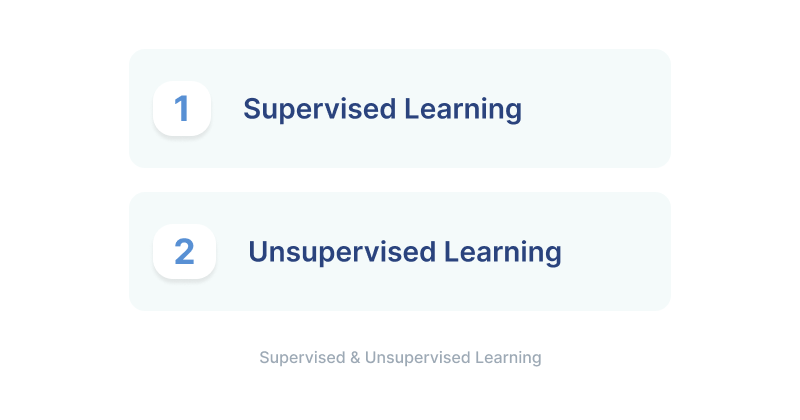
Another distinction between AI-powered sorting is that of supervised and unsupervised machine learning. These are explained in the following:
1. Supervised Learning
This is a form of machine learning that is aided by human interaction. If you use this method of classification, you will have to make the algorithm learn about your classification criteria. For this, you may have to feed certain sample files into the software and then tell it how to sort them. After that, you can enter new data, and the software will follow your pre-determined criteria.
Pros
- Less prone to errors and wrong classification.
- Exactly according to users' needs.
- More appropriate for professional use.
Cons
- Takes too much time.
- More manual work.
2. Unsupervised Learning
This type of machine learning sorts of data on its own. The documents are fed into the system without any set rules, and the system categorizes them according to its own understanding. The algorithm may find a common group of words, such as “mobile phones” or “Cybersecurity,” in multiple writeups and classify them under a section named technology.
Pros
- Takes less effort.
- Much faster.
- Good for large amounts of data.
Cons
- Risk of errors.
- Results might not be exactly what the user expected.
OCR in Document Classification
We have briefly discussed the role of OCR in document classification. However, it is not confined to just reading images present in textual documents and digitalizing documents. It has many more applications as well. Some of them are discussed here.
1. Invoice/Receipts Reading
Certain OCR software are able to read and classify invoices as they are being made. So, for example, in a grocery store, when various bills are being printed in succession, an OCR software is continuously analyzing them and categorizing them according to set criteria. This can be according to the total amount, nature of products sold, and much more.
2. PDF Extraction
Many businesses store and analyze data in the form of PDFs. It is a professional file format and has wide applications. However, as you may know, the content inside a PDF is unmodifiable. Therefore, users may need to convert them into searchable text before categorizing them.
For this purpose, OCR tools like our PDF to Word Converter or Adobe Acrobat are present to make PDFs editable. Once these PDFs are converted, their classification can be automated, as AI tools can now read their content with ease.
3. Image Classification
When we previously discussed OCR, we focused on images that are present within textual documents. However, some businesses deal with image-only files as well. For example, there may be a bunch of infographics that need sorting.
In order for AI to perform sorting on such data, they require access to the content present inside them. This task is done with the help of OCR, as explained before.
Tools for Document Classification
Now, let’s show you some tools that can be used for the purposes explained above. All of them perform more or less the same function, but we are giving you a variety of options to help you find the perfect fit.
1. Google Cloud
Google Cloud provides document AI that performs classification based on AI-enabled algorithms. It extracts data from documents and allows different modifications. It also has OCR that allows for detailed data extraction.
It is a simple tool that identifies document type just by uploading it. Businesses can consider this if they are looking for base-level or easy-to-operate software. Also, this tool doesn’t require you to train models. So, it uses unsupervised learning in that sense.
2. Microsoft Azure
Microsoft Azure is another alternative that categorizes uploaded documents after analyzing their content. It classifies documents using the techniques we have mentioned above. It is also an easy-to-use software.
Businesses such as the banking sector or healthcare can use this tool to categorize certificates, bills, receipts, invoices, and more.
3. MonkeyLearn
MonkeyLearn is an analytical tool that can classify content based on sentiment analysis. Therefore, it has applications in sorting customer feedback. This tool doesn’t just sort customer feedback but also provides detailed insights about them.
Businesses that provide services or products directly to customers may find this utility useful. These may include retail stores, online shops, or online service providers.
4. ClarifAI
ClarifAI is an AI platform that can perform data labeling at swift speeds. It works for all sorts of data formats, such as images, documents, PDFs, and more. The tool’s simple drag-and-drop UI makes it convenient for users to train AI models and boost document sorting.
ClarifAI has big claims, such as a 100 times increase in productivity, and this confidence in their capabilities is reflected in their services as well. This is useful for businesses that function at a point where it takes multiple levels before reaching the actual customer. This is because this tool utilizes supervised learning in a way.
Some Important Points
Before we get to the end of this article, let us clear up some confusion that you might have.
- Integrating technologies such as AI, ML, and OCR into your workflow doesn’t mean you won’t need any workforce. You will definitely need a team to operate the tools and processes mentioned above.
- Leaving everything to AI might not be a good idea all the time. Even though we fully trust in AI’s ability to perform error-free work, it doesn’t mean it will always turn out to be what you expect. So, always double-check before finalizing document sorting.
- AI comes in a wide variety these days. You must perform your research before choosing a tool for your work. If something is working for one business, it doesn’t mean it will work for you as well.
If you keep these things in mind, you should be set for your automation endeavors.
Final Verdict
The information from this article can be used as a jump-start into the world of AI for document organization. On top of that, if you include OCR in it, you can take it to the next level. To end our discussion, we would like to re-emphasize the importance of this process of document classification, as it is really necessary for you to stay on par with your competitors.
All types of businesses, ranging from fresh startups to well-settled firms, acknowledge the importance of this process and implement it as well. You need to realize this as well and start working on it as soon as possible.
